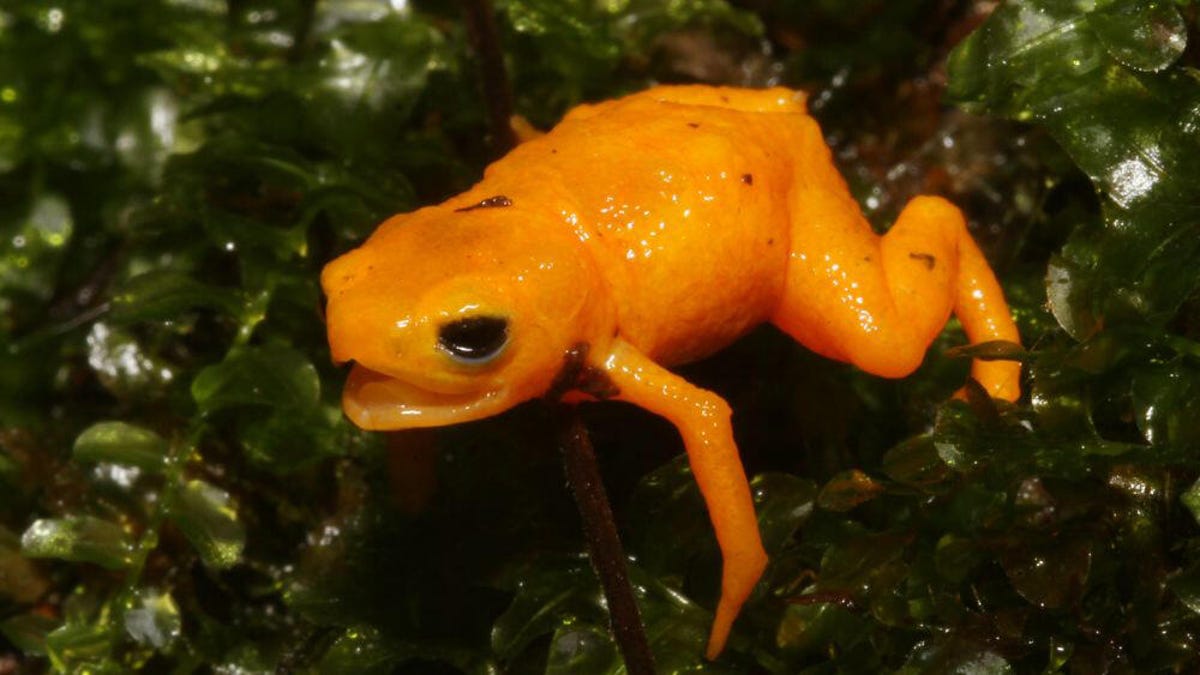Meet the pumpkin toadlet, a new species of poisonous frog with a curious secret
A ribbeting discovery made in the forests of Brazil.

The new species of Brachycephalus was discovered in the Mantiqueira mountain range.
In the dense greenery of the Atlantic Forest along Brazil's east coast, scientists have discovered a new species of tiny frog, just a little bigger than a thumbnail. The new species, Brachycephalus rotenbergae, is a small, bright and highly poisonous amphibian known as a "pumpkin toadlet." Based on the image above, you can understand why.
Described in the journal PLOS One on Wednesday, B. rotenbergae was discovered south of the Mantiqueira mountain range in the state of São Paulo, Brazil. The region is home to a few dozen species of pumpkin toadlet that share a number of characteristics. The most obvious? They're colored like a hearty, delicious pumpkin soup. Or an orange soda.
They're bright, OK!
To identify the miniature species, the Brazilian research team carried out a number of analyses, examining the toadlet's size and shape, studying its bones, sifting through its genes and listening to its typical frog song.
Between October 2017 and September 2019, the research team spent time in two different areas in the Atlantic Forest. A total of 76 field surveys were conducted, mostly during daylight hours to understand the activity and history of the new species.
It's tough to discover new species of Brachycephalus, the researchers note, because the brightest members of the genus look similar -- both genetically and physically. Fortunately, there's a bit of a tell with B. rotenbergae: It's a little smaller than its cousin B. ephippium and has characteristic faded dark spots on the skull.
Some pumpkin toadlets, including B. rotenbergae, also have a curious, visually-stunning secret: The bones close to the surface of their fleshy skin beam under fluorescent light.
Pumpkin toadlets have bones that glow under fluorescent light.
Though the human eye can't see these under normal light, scientists believe some animals use them as visual cues. This might be helpful to other toadlets in the forest or it could be used as a deterrent. Some species of birds or spiders that feast on frogs may detect the fluorescence as a "DO NOT EAT" sign.
Fluorescence is pretty common in the animal kingdom, with scientists recently discovering many native Australian animals also emit the glow under UV light. Even tardigrades -- those unkillable water bears -- use fluorescence as a shield.
In the new research paper, the team details the abundance of toadlets encountered during surveys. With climate change driving biodiversity loss across the globe, that's a rare win for a previously unknown species.
Brachycephalus rotenbergae is named after Elise Laura K. Rotenberg, a founder of the Brazilian NGO Projeto Danis, dedicated to researching and conserving the Atlantic Forest where the toadlet was discovered.

